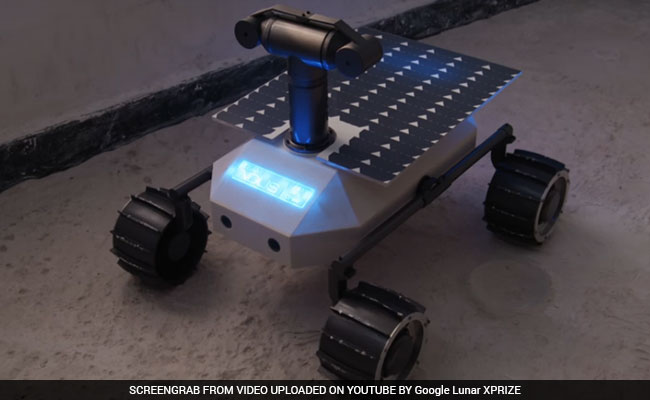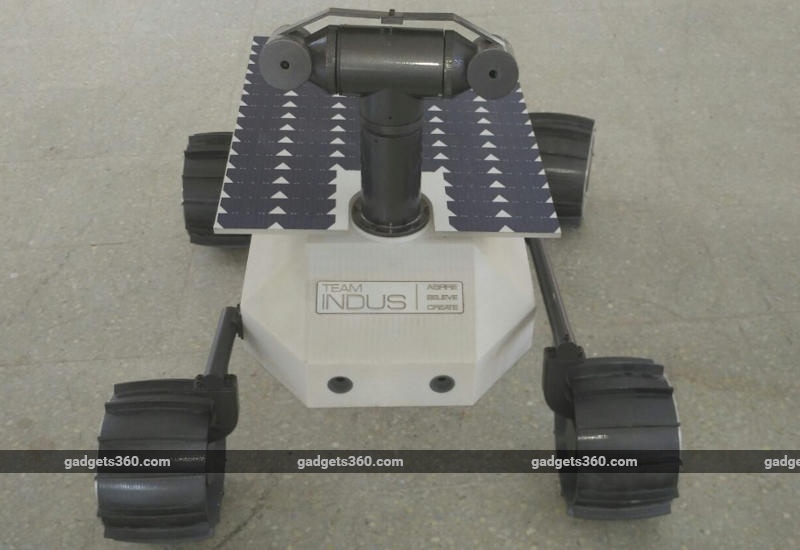Bad Guy
BANNED

- Joined
- Nov 4, 2015
- Messages
- 974
- Reaction score
- -5
- Country
- Location
With ISRO Deal, Indian Space Startup Gets Big Boost In Global Space Race
 Team Indus has signed a deal with ISRO to send a rover to the moon using its PSLV rocket.
Team Indus has signed a deal with ISRO to send a rover to the moon using its PSLV rocket.
Story Highlights
 Team Indus is working on their moon mission from their Bengaluru HQ.
Team Indus is working on their moon mission from their Bengaluru HQ.

A prototype of the Team Indus rover that plans to explore the moon.
And again, it will be covered on this thread because it's about any Indian Lunar probe not only from ISRO or VSSC.
@Abingdonboy @anant_s @Hindustani78

Story Highlights
- Private space company Team Indus signs deal to use ISRO's PSLV rocket
- Rocket will carry rover, lander, orbiter to the moon by end of 2017
- Only among 30 contenders for $20 million prize to seal such a deal
Bengaluru: It may be just one step for a small startup, but it is a giant leap for India's space program. Team Indus, a private company that wants to be India's first to send a rover to the moon, has bought a ticket aboard a 320-ton giant rocket, bringing it closer to its goal.
The moonshot will be realised with the trusted Polar Satellite Launch Vehicle or PSLV engineered by India's space agency ISRO. Team Indus is buying the launch at commercial rates, says ISRO. Besides a trip to the moon and the bragging rights that follow, the coveted Google Lunar XPRIZE is also at stake.

Announced in 2007, the competition offers a $20 million first prize to the first privately funded teams to land a robot on the moon that successfully travels more than 500 meters and transmits back high-definition images and video.
A diverse group of around 100 people formed in 2010, Bengaluru-based Team Indus aims to send an orbiter, a lander and a rover to the moon before end of 2017. Among the 30-odd contenders for the prize from around the world, only Team Indus has procured a rocket contract for a functional launcher.

A prototype of the Team Indus rover that plans to explore the moon.
"We have signed a launch services agreement with Team Indus which essentially provides a PSLV launch for launching a lunar orbiter and lander sometime in the fourth quarter of 2017," Rakesh Sasibhushan, Chairman and Managing Director of Antrix Corporation - the commercial arm of ISRO, Bengaluru - told NDTV.
Having inked the deal, the group has to now race against time to meet the deadline and also meet ISRO's stringent specifications to make its payload worthy of flying on a national resource.
In my opinion, launching HHK-1 rover of team Indus in 2017 will further bear experience for Cdy-2's rover in 2018.Is ISRO taking a big risk by launching a lunar satellite from a novice company? "Not really. All satellites that have to fly on the PSLV have to undergo a qualification test and we will ensure that the satellite is worthy of flying on the PSLV," Mr Sashibhushan said.
And again, it will be covered on this thread because it's about any Indian Lunar probe not only from ISRO or VSSC.
@Abingdonboy @anant_s @Hindustani78






